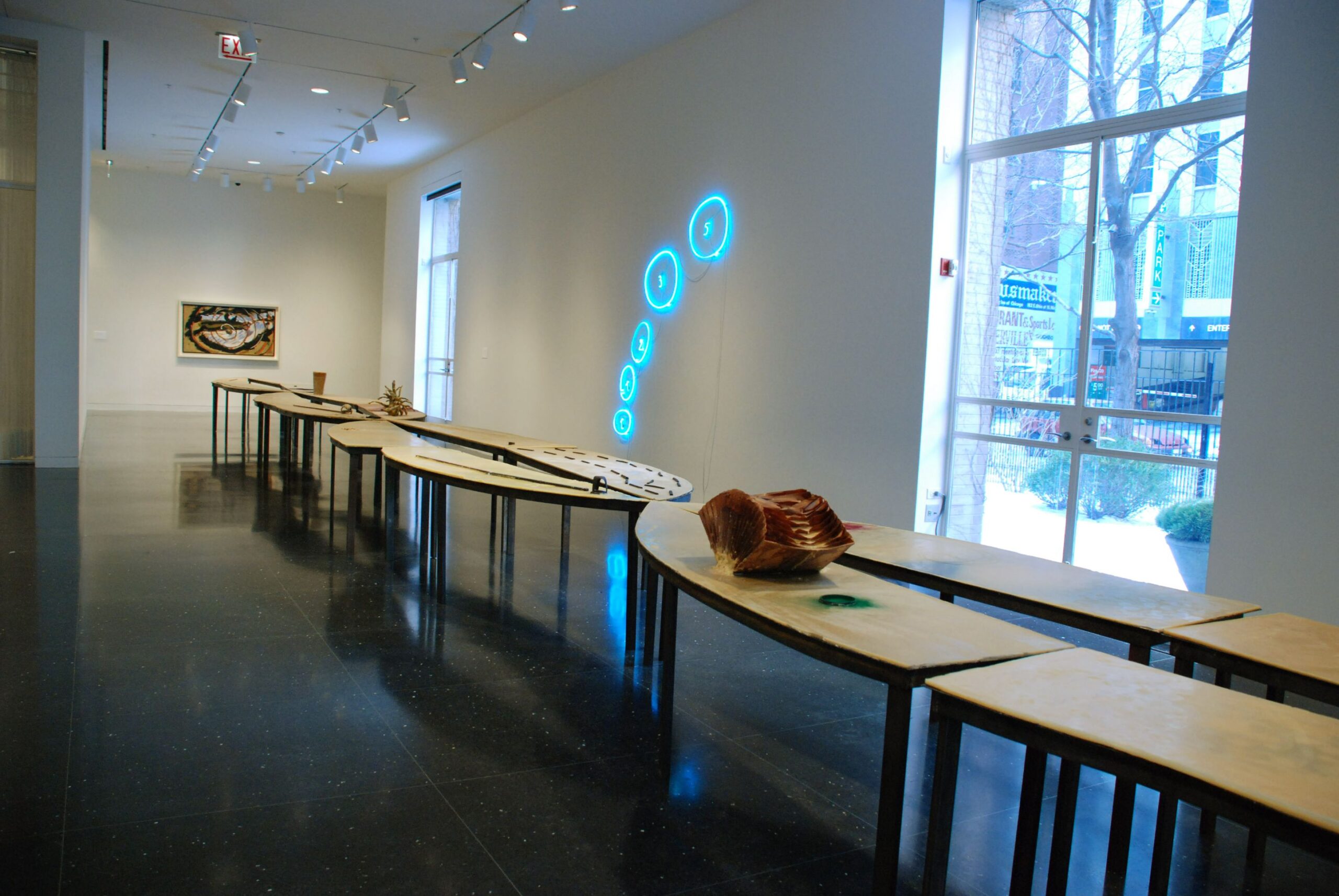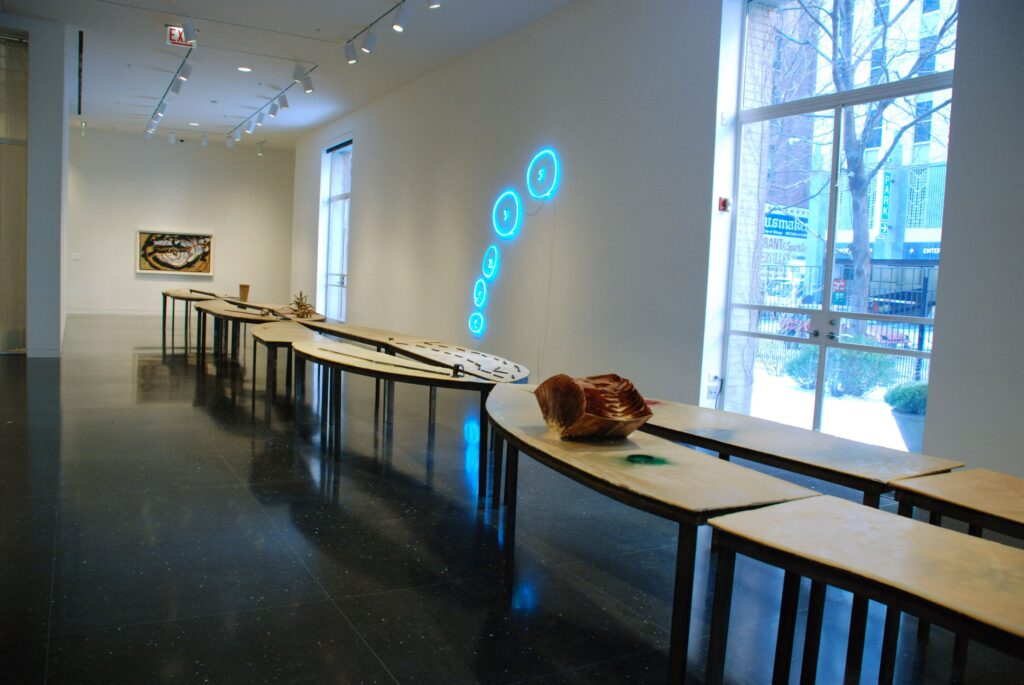Mario Merz


Past exhibition
Mario Merz
About the Exhibition
The Arts Club of Chicago is pleased to announce the opening of an exhibition by Mario Merz on Thursday 7 February 2008. Merz (1925–2003) was born in Milan, Italy and grew up in Turin. While imprisoned in 1945 for anti-fascist protest, he began his artistic development with drawing. He became a prominent figure in the Arte Povera movement in Italy that included Giovanni Anselmo, Alighiero Boetti, Luciano Fabro, Giulio Paolini, Michelangelo Pistoletto, among others. Literally meaning “poor art,” the term was coined by curator Germano Celant in 1967. This diverse group of artists was united by an interest in critiquing institutionalized high culture by utilizing everyday spaces and materials. In the context of the disillusionment of postwar Europe, they sought to reconfigure the relationship between art and life. Merz was the oldest of the group, and his igloo structures became its ‘poster child,’ symbolizing nomadic restlessness and humanity’s ever-changing relationship to nature.
The seven works included in the exhibition, executed between 1968 and 1985, exemplify some of the major material and conceptual motifs of Merz’s career. The neon construction Senza Titolo (Untitled) illustrates his interest in the Fibonacci series, a sequence in which each number (except the first two) is the sum of the two preceding numbers (1, 1, 2, 3, 5, 8…). Known since the Middle Ages, the pattern is found frequently in the natural world: the branching of trees, the growth of flower petals, shells, pine cones, and animal horns. As Merz put it, “The series is life.” The spiral, a translation of this natural law, appears frequently in his work. Along with the examination of concepts that bridge the empirical and symbolic is his focus on revitalizing everyday acts and objects, as seen in Quattro tavole in forma di foglie di magnolia (Four tables in the shape of magnolia leaves). These steel tables are an anti-elitist gesture, representative of domestic ritual in the past and present. Beeswax, a major element of Merz’s iconography, figures also in the steel sculpture Pianissimo (Very slowly, very quietly) to draw parallels between organic processes and social structures.
About the Artist
Merz’s first solo exhibition in the United States was held at the Walker Art Center, Minneapolis, in 1972. He has been the subject of retrospectives at the Museum Folkwang, Essen, Stedelijk van Abbemuseum, Eindhoven (1979), Whitechapel, London (1980), and Kunsthalle, Basel (1981) as well as participated in group shows such as Documenta 7 (1982) and the Venice Biennali (1986).